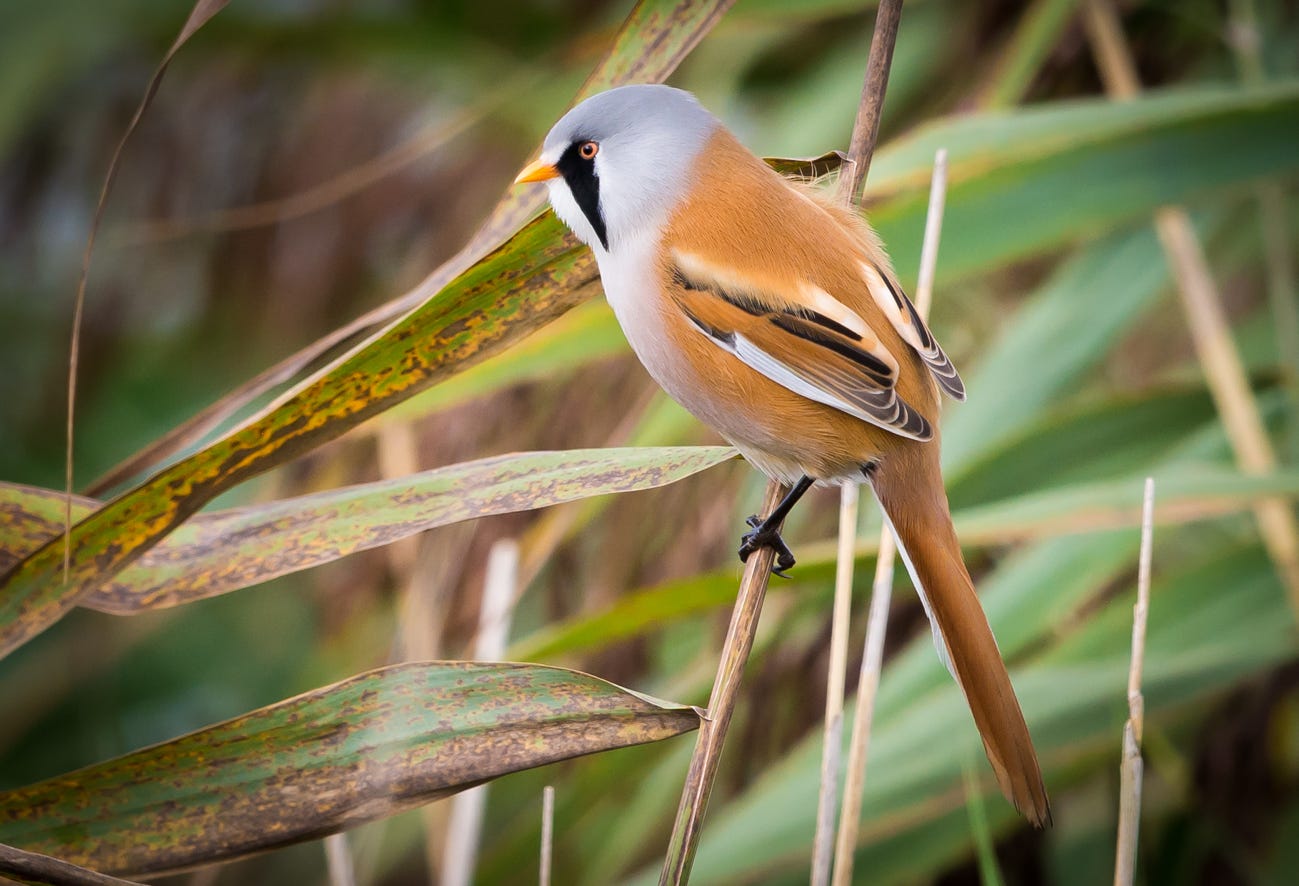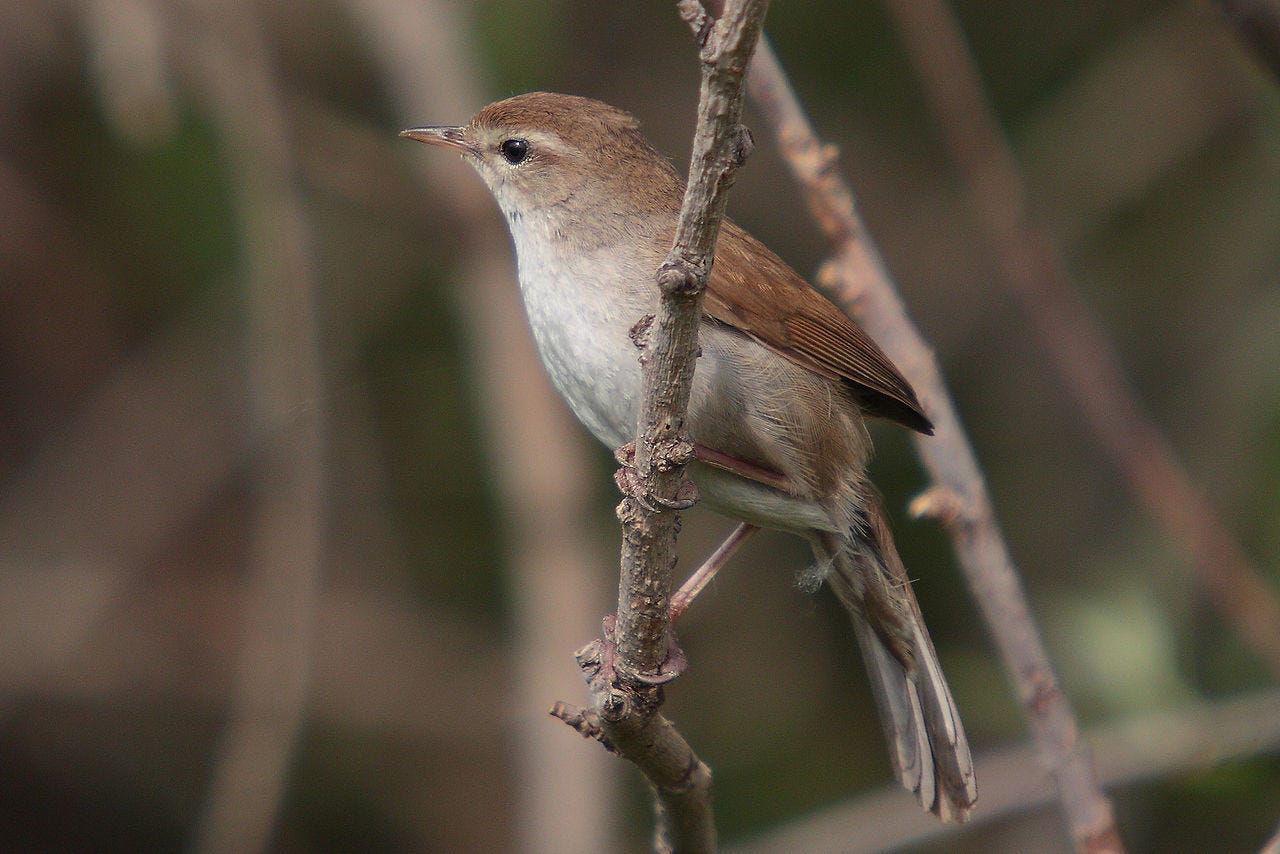If you go down to the reeds today…
…well, you can’t really be sure, but you may get a ‘ping’ surprise.
For every bearded tit that ever there was likes reeds. They are among the most reed-dependent of all our birds, and they like big beds of it. A fringed ditch just won’t suffice.
Largely the colour of phragmites (Norfolk) reed, clinging to the swaying seedheads or feeding deep among the stems, bearded tits can be hard to spot. No doubt they would hardly be seen at all if not for their incessant contact calls.
The call is zingy and metallic (#WineTastingNotes), sometimes likened to two coins being flicked together.
It’s interspersed with little popping sounds, like bubbles bursting.
When lots are calling together, think: miniature space-marines shooting it out with tiny lasers.
Bearded tits are gregarious, and often found in small parties. They rely on sound to keep in touch in an environment where visibility is incredibly poor.
They are especially vocal when they fly. They are not birds that make flight look easy - follow the noises and you may see a small, cinnamon-coloured bird with very short wings and a very long tail, apparently struggling to stay airborne over the sea of reeds.

Oftentimes that’s as good as the view gets. But if you’re in luck the bird will stay on the seedheads up top, or drop in to the edge of the reeds or the water, and allow you to see why short wings and a long tail are well suited to a life balancing among tall stems.
You might also get a chance to see how adept they are at doing the splits, hanging like a circus act between two parallel reeds.
In recent years ‘bearded reedling’ has been put forward as an alternative name. Aside from being a useful pointer to where they can be found, it’s pleasingly Tolkein-esque (‘why, that be the haunt of the bearded reedlings, Master Gandalf’).
However, mainly the change of name is to signal that these birds aren’t closely related to the blue tits or great tits at all, but better understood as a thing unto themselves.
Whatever you choose to call them, they can be found throughout the year in their favoured wetlands - try Leighton Moss in Lancashire, the North Norfolk coast, the Avalon Marshes in Somerset, or Rye Harbour, Dungeness or Stodmarsh in the southeast.
Sightings peak in October, when birds sometimes explore away from their core areas and might be encountered beside ponds and along rivers.
This is the only time of year I have seen them on my current local patch. Each time it’s been the ‘ping’ that has given them away.
Likely shouting nearby: Cetti Warbler
Still calling…
Early September is quiet for birdsong in Britain, but a few birds are noticeable. Listen out for:
Robin
Wren
Woodpigeon
Stock Dove
Chiffchaff
Green Woodpecker
🥾 Upcoming walkshops
The first few birdsong walkshops for 2024 are now booking. So far these are all at Herstmonceux Castle (near Hailsham, Sussex), but I expect to add more over the next few months, including dates at Stanmer Park (Brighton).
There’s also a one-off autumn event at Herstmonceux on 24 September.
Join the Early Bird Club
If you pay for a subscription to Shriek of the Week (from £25 a year or £5 a month), you get homemade narrated versions of each post, and an invitation to the monthly Early Bird Club. It’s a chance to listen to live sounds and watch birds together via Zoom for an hour. The next is this Saturday 2 Sept, 7-8am.
Thanks for reading Shriek of the Week. We’ve slowed with the birdsong, so emails are now monthly until Christmas. In the meantime, check out the growing archive. And if you have requests, feedback or suggestions, please leave a comment or get in touch.
~ Charlie
Final thought:
Welcome to Mary Oliver Garden
“My name is Blair, and I’ll be your server today. To start, I have just one question: What will you do with your one wild and precious appetizer? Toasted ravioli?”
McSweeney’s, via Jocelyn K. Glei
Media credits:
Bearded tit photo by Rob Zweers from Arnhem, Netherlands, CC BY 2.0 via Wikimedia Commons
Cettis’ warbler photo by Mark S Jobling, reproduced under Creative Commons licence CC BY 3.0





